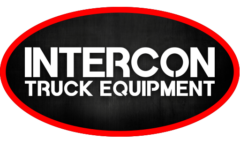
We are in the midst of a truck lighting revolution in the automotive industry that started with the proliferation of light-emitting diodes (LEDs). More dramatic lighting innovations are fast emerging, such as laser diodes, organic LEDs, and dynamic bending light headlamps. Historically, new automotive technologies have always first manifested themselves in luxury brands, then migrated downward to lower trim level models and non-retail customers such as the vocational work truck market.
Truck lighting is an important productivity and safety feature in the vocational fleet market. Think about it; a work truck may be equipped with the latest auxiliary equipment, but the value of these assets is diminished if they cannot be used productively in a safe, well-lit work environment. Traditional lighting options in vocational trucks are incandescent and halogen lights, along with high-intensity discharge (HID) xenon lamps. However, during the past decade, there has been an ongoing migration away from traditional 12-volt incandescent lights to LED truck lighting in upfit packages because they are less expensive, have a 10-year lifespan, draw a smaller electric draw to consume less energy, produce increased lumens for greater luminosity, and are almost maintenance-free. When wired directly into the vehicle’s electrical system, LED truck lighting options can be rated for 100,000 hours, far surpassing the 25,000-hour rating for incandescent lights.
On a total lifecycle cost basis, LED truck lighting is extremely cost-effective. For instance, a four-inch round stop lamp with an incandescent bulb uses about 2.1 amps to meet lighting requirements of Federal Motor Vehicle Safety Standard 108, while LEDs meet the same requirements with only 0.5 amps. When first introduced, LEDs produced fewer than 5 lumens per watt, requiring many diodes. However, output is now about 70 lumens and projected to reach 180 to 200 by 2020, according to the Department of Energy.
The upfitting industry is expanding the palette of LED truck lighting options for vocational trucks by finding more and more places to use LEDs in truck upfits. It is increasingly common to find truck caps and tonneau covers equipped with LED lighting, or in dome lamps to illuminate the interior of truck cabs, or mounted inside a toolbox to illuminate interior contents. From a driver perspective, an LED light mounted inside the truck interior provides the needed lumens to allow workers to perform close-up detail work, such as paperwork, without the need to hold a flashlight for additional illumination. In addition, LEDs are rapidly proliferating into other segments of the fleet market. For instance, approximately two-thirds of all new trailers are now equipped with LED lighting. Similarly, a growing number of OEMs are making LEDs standard equipment or going with all-LED headlamps.







